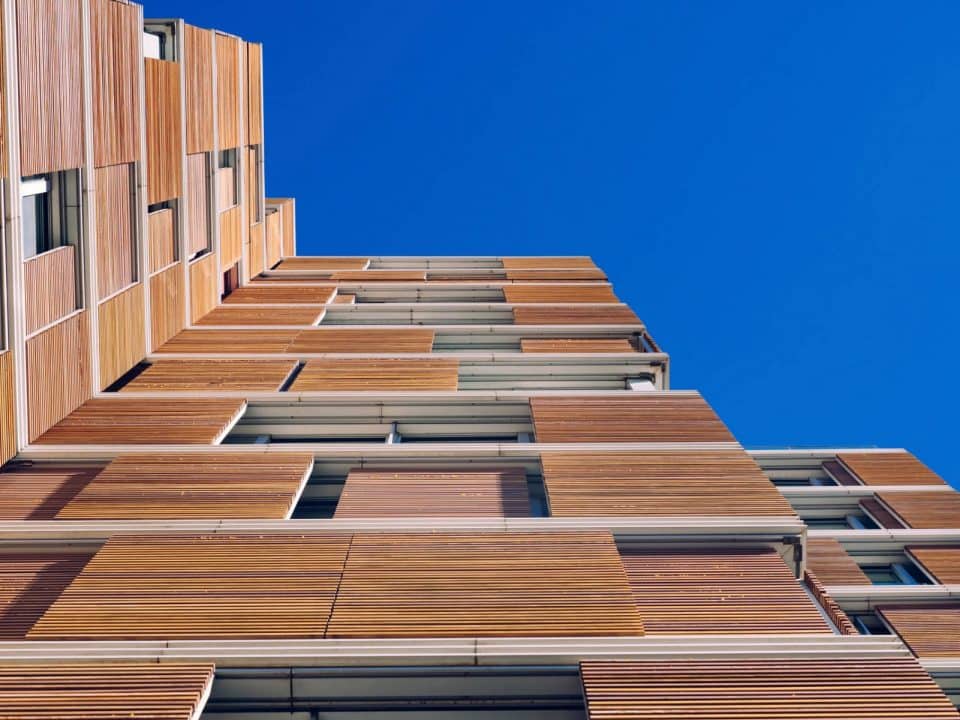
Sustainable Buildings
Understanding the relationship between buildings, pollution, and climate change requires simplifying the components. The first step is to define sustainability from the investors’ perspective. To do this, we consulted environmental engineers, professors from the University of Florida’s School of Design, Construction, and Planning, and the Director of Campus Sustainability. One key takeaway is that there are many career paths in sustainability but there is no one “perfect” definition for this topic.
After this first step, it became clear that this article needed a much tighter objective than the impact of buildings on the atmosphere and our climate. Early conversations with sustainability professionals and initial research into sustainability measures led us to look at the LEED designation and the quantification of smart building design. Thus, this article accepts climate change assumptions from reputable organizations and evaluates the effectiveness of the LEED certification in identifying buildings’ effects on our environment.
The Assumptions
According to NASA, “It is undeniable that human activities have warmed the atmosphere, ocean, and land and that widespread and rapid changes in the atmosphere, ocean, cryosphere, and biosphere have occurred.” The World Green Building Council states that new construction accounts for 40% of the world’s greenhouse gas emissions and 36% of the world’s energy use. These greenhouse gases include carbon dioxide, methane, nitrous oxide, and chlorofluorocarbons (CFCs). The United States Environmental Protection Agency (EPA) states that “Since 1970, CO2 emissions have increased by about 90%, with emissions from fossil fuel combustion and industrial processes contributing about 78% of the total greenhouse gas emissions increase from 1970 to 2011.”
Because of the challenges in gathering concrete data surrounding buildings’ impact on climate change, we are going to take the statements from these agencies as fact. The assumptions we accept on faith are that global temperatures are rising, carbon emissions are contributing to rising temperatures, burning fossil fuels are the primary contributor to carbon emissions, and buildings consume energy causing the burning of fossil fuels which leads to carbon emissions.
Figure 1 — Source: NASA as of April 2022
The data in Figure 1, taken from NASA, shows an increase in global mean surface air temperature over time. The EPA and NOAA have resources that show a similar growth in temperature. The graph shows a dramatic increase in temperature from 1964 to the present. Climate change occurs over very long periods of time, so finding its cause is extremely difficult. In a world with so many changes continuously taking place, it is hard to link individual activities over the past decade to the specific level of climate impact. It seems clear, however, that the average global temperature is steadily rising.
Following the assumptions of the notable agencies, we accept that there is a link between building construction and operations and energy consumption that leads to greater greenhouse gas emissions. These emissions are contributing to this rising temperature. Thus, some benefits will be gained if we can find a way to decrease energy emissions from the operations of buildings. Many real estate professionals have turned to building-rating systems to demonstrate that their buildings are more efficient than unrated buildings and this leads to lower energy consumption.
LEED Certification
The most commonly used building-rating system in the United States is LEED which stands for Leadership in Energy and Environmental Design. It offers a framework for the design and construction of green buildings. Many components describe a responsible building such as energy conservation, water conservation, a healthy environment, and waste recycling to name a few. However, the only climate component that we can effectively measure is the use of energy.
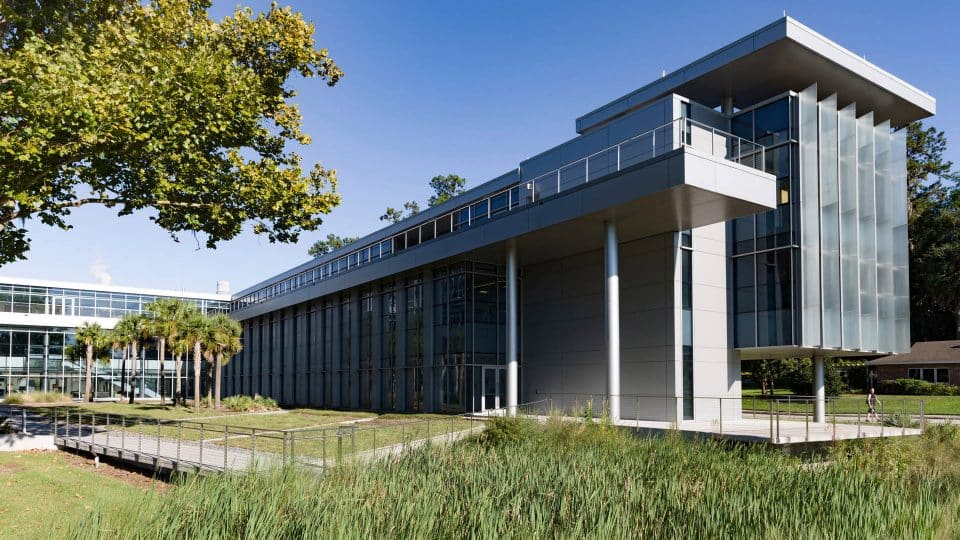
The LEED Scorecard looks at nine elements of buildings: Integrative Process, Location and Transportation, Sustainable Sites, Water Efficiency, Energy and Atmosphere, Materials and Resources, Indoor Environmental Quality, Innovation, and Regional Priority. There are different levels of LEED certification: silver, gold, and platinum. These levels of certification are based on the number of points a building receives based on the 9 scorecard elements. Building-rating systems like LEED are intended to encourage efficient design. Therefore, the focus of LEED is on design, not operation. The assumption is that if buildings are more efficiently designed, they would experience a decrease in energy consumption.
When looking at the sustainability of buildings, the most important factor to study is energy consumption. At least, this is the element that can be objectively measured. To earn credits in the Energy and Atmosphere category of the LEED scorecard, design professionals must model energy performance through simulation. The credit is not earned through actual building performance post-construction. Post-occupancy evaluations are required to determine if the certified building is running according to design but these evaluations are rarely conducted according to Volume 41 of the Energy and Buildings journal.
LEED Elements
- Integrative Process
- Location and Transportation
- Sustainable Sites
- Water Efficiency
- Energy and Atmosphere
- Materials and Resources
- Indoor Environmental Quality
- Innovation
- Regional Priority
In the Energy and Atmosphere category, there are required and non-required credits that a building can acquire. Required credits include Fundamental Commissioning and Verification, Minimum Energy Performance, Building-Level Energy Metering, and Fundamental Refrigerant Management. Optional credits include Enhanced Commissioning, Optimized Energy Performance, Advanced Energy Metering, Grid Harmonization, Renewable Energy, and Enhanced Refrigerant Management. Technically, a building can be LEED-certified without achieving any of the optional Energy and Atmosphere credits.
Renovation
Dr. Dustin Stephany, a Sustainable Building Coordinator at UF provided a wealth of building-specific data for buildings on the University of Florida campus. Dr. Stephany guides building professionals in the execution of sustainable projects across the campus. Using this information, we can evaluate the impact of the LEED certification on energy expenditures in both newly constructed and existing buildings.
Recall that the LEED program measures nine elements of design and its focus is on a wide range of sustainability components including water conservation and indoor environmental quality among others. We have chosen to focus on the single element that is measurable and associated with climate change — energy use. We should also note that we have not traced the electricity back to its source to determine if it is derived from the burning of fossil fuels. We simply want to determine if the LEED certification translates into a given reduction in the use of energy and thus a reduction in emissions going into the atmosphere. If all buildings were LEED-certified, would our climate change problem be solved?
Figure 2 — Source: UF Sustainable Building Study
The Annual Utilities Cost chart in Figure 2 shows three buildings on the University of Florida campus that underwent renovations resulting in LEED certification during the past 20 years. The buildings (and first year of operations post-certification) are the Environmental Health Safety (EHS) Administration Building (2012), Gator Corner Dining (2017), and Broward Dining Hall (2017). All of these buildings operated without sustainability modifications or certification before renovation. Each renovation was executed in a manner to earn a LEED certification immediately prior to the identified year.
Each line in the chart represents the total energy cost for the given fiscal year for a building. The cost of energy stays relatively the same over the period measured, meaning there is little difference in energy use post-certification. Based on LEED design expectations, one would assume that post-renovation years would show a dip in energy consumption and therefore utility costs. Broward dining and Gator Corner dining, both reoccupied in 2017, show a decline in annual utility costs during 2020 but these are dining halls and 2020 was the first Covid-19 year. The EHS Administration building shows no noticeable decline in costs post-renovation.
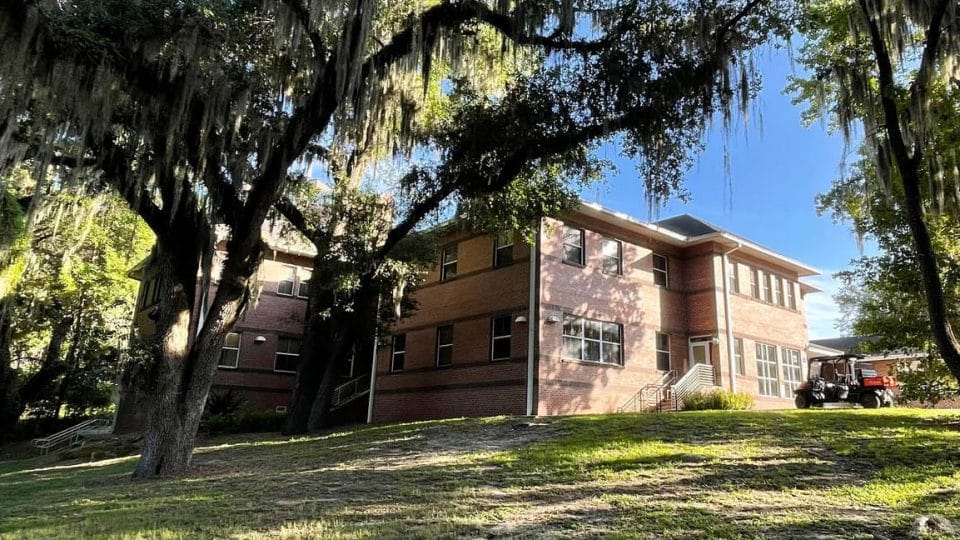
Many factors might mask an improvement in our data. For instance, renovation could expand the building or open a previously unused area. The hours of operation may have changed (we know that this happened in some cases) or the intensity of use may have increased. Therefore, it is informative to examine the results in other ways. For example, consider the EHS Administration building which was certified in 2012. The building’s per-square-foot energy cost (accounting for space usage) is shown in Figure 3.
From its 2012 renovation, it earned 16/19 credits for the “Optimize Energy Performance” category on the LEED scorecard. However, there is no decline in the amount that the University is spending on energy within the EHS building. The only reduction in energy costs is during 2011 when the building was undergoing renovation. From these two charts, it is difficult to suggest that LEED certification has any impact on CO2 emissions from renovated older buildings.
Figure 3 — Source: UF Sustainable Building Study
New Construction
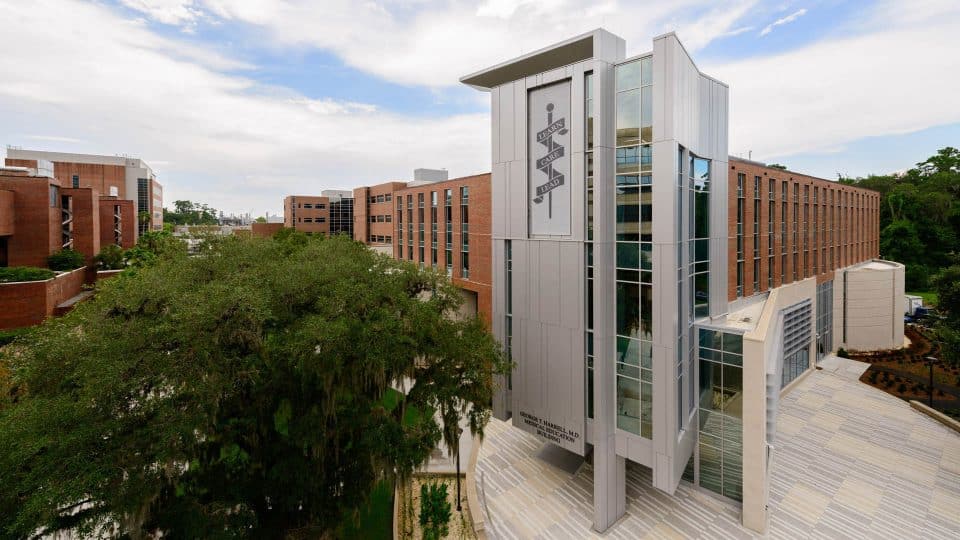
Thus far, we have only considered existing buildings that obtained certification through renovation. We are quite certain that LEED design impacts energy efficiency in new construction. Fortunately, the University has committed significant effort to construct sustainable buildings, giving us several comparisons to consider along with the renovated properties. We can compare annual per-square-foot energy costs at various types of buildings. The purpose of the building will impact its hours of operations, the number of entries and exits, internal activities, and overall intensity of use. So we group our comparisons: Figure 4 shows Classrooms, Figure 5 shows Offices, and Figure 6 shows Food Facilities.
Figure 4 — Source: UF Sustainable Building Study
In Figures 4, 5, & 6, dark columns represent LEED-certified buildings and light columns represent non-certified buildings at the University of Florida. This broad collection of new and existing, LEED and non-LEED buildings gives mixed signals on the effectiveness of LEED certification as a measure of energy efficiency. Of the classrooms, both LEED-certified buildings use less energy per square foot than the non-certified Gerson Hall. However, Keene-Flint shows the lowest energy costs of all classrooms and it is a non-certified building.
Figure 5 — Source: UF Sustainable Building Study
Figure 5 presents a comparison of energy costs across office buildings. The EHS Office, a structure previously shown to have similar energy costs pre-and post-certification, is among the lowest energy cost buildings. Its energy cost matches exactly with Dauer Hall which is not a certified building. Overall, the office properties show the most promising connection between certification and low energy cost. The high energy use in West Hall and low energy use in Dauer Hall prevent us from identifying a strong signal from certification, however.
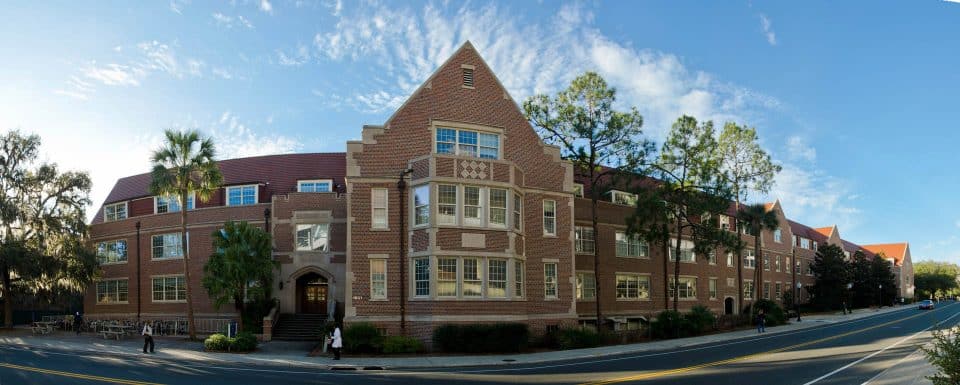
In the case of the food facilities, shown in Figure 6, the result is completely counter to our expectations. Gator Corner and Broward Dining Center are both renovated buildings that did not show a post-renovation energy reduction until the Covid year. Both of these buildings use energy at a much higher rate than does the non-certified Racquet Club Dining Center. Factors such as operating hours and the use of energy-intensive machinery have not been removed from our analysis and could impact the results. Nevertheless, we are left questioning LEED’s reliability in energy use reduction through our building energy model.
Figure 6 — Source: UF Sustainable Building Study
There are numerous reasons why this analysis of certification data is inconclusive. As mentioned above, every building is unique and each may operate for different hours at a different level of intensity. The multiple comparisons are an attempt to address these factors. Also, maintenance is required to keep certified buildings conforming to their designed performance. If certified buildings are not maintained following LEED standards, then performance may differ from design.
Overall, LEED may not be the optimal solution for the reduction in energy consumption but it should not be completely discounted. LEED offers a framework to follow which helps designers keep sustainability in mind while going through the design process. In addition to building energy, LEED focuses on key elements of buildings that can help investors and developers evaluate their overall sustainability. Being aware of building materials, water efficiency, and transportation are all important for developing a site. The LEED concepts and procedures are valuable in the broad aspect of sustainable design.
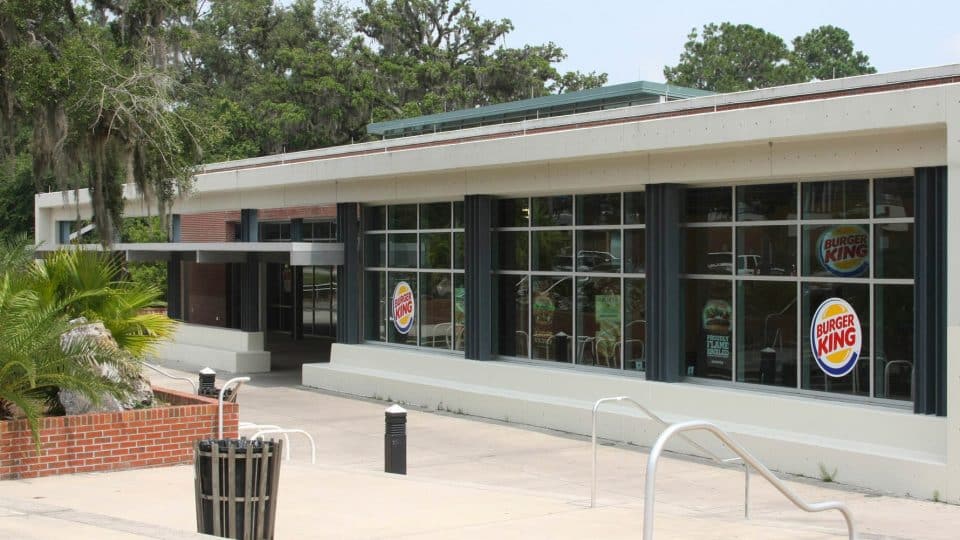
Climate change is a worldwide issue that will not be solved overnight. Following the initial assumptions, buildings make up a large percentage of energy consumption and emissions. Therefore, it is important to consider design and operation with a goal of sustainability. The LEED program brings attention to building sustainability characteristics that might otherwise be overlooked. It is important now to realize that building operations are as important as design.
Building sustainability is a very public topic in which many real estate investors are engaged. Everyone wants a clean, natural, and long-lived environment for the current and future generations. Translating that goal into a measurable standard is very challenging. A rating system or simple number that describes how well a building supports a clean environment is very desirable but complex at best and impossible at worst. LEED may not be the answer to this specific question about the environment. However, LEED does bring some clarity to the conversation for investors. If the goal is to promote reduced energy use in buildings in an effort to reduce emissions and improve the atmosphere, then a LEED certification gives you very little information. If politicians, citizens, and investors are truly motivated to protect the environment, they need to go beyond LEED to determine whether buildings are operating efficiently. LEED is helpful but we are not finished.